
The Planning Commission of India recently adopted the Tendulkar Committee's methodology for poverty estimate that includes spends on education and health besides food, taking the number of the poor to a whopping 37.2 per cent from 27.5 per cent estimated earlier in 2004.
This means that India now has 100 million more people living below the poverty line than in 2004.
The Planning Commission, which was asked by the Empowered Group of Ministers on Food to give its estimate of below the poverty line families for implementing the proposed food security law, is likely to submit its report to Prime Minister Manmohan Singh soon, sources said.
A Plan panel meeting chaired by deputy chairman Montek Singh Ahluwalia adopted the Suresh Tendulkar Committee report which had suggested inclusion of expenditure on health and education besides food to compute poverty.
National estimates of the percentage of the population falling below the poverty line are based on surveys of sub-groups, with the results weighted by the number of people in each group.
Definitions of poverty vary considerably among nations. For example, rich nations generally employ more generous standards of poverty than poor nations.
What does poverty in India actually mean? It is difficult for those living in an industrialised country to truly appreciate the level of poverty in our country.
In the West, even those living in poverty can live in well-constructed dwellings, with heating, clean running water, indoor toilet facilities, access to health care, and even a vehicle. But such luxuries are a distant dream for India's poor.
So how does India arrive at below poverty line data? Is the level of poverty in India on the decline? . . .
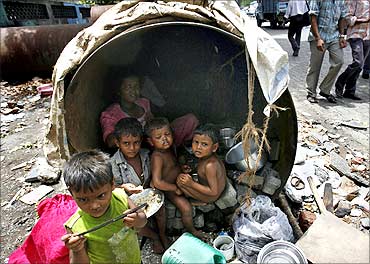
How are the BPL figures calculated in India?
The earlier definition of India's poverty was based on calorie intake, according to which only 27.5 per cent of people were living below the poverty line as on March 1, 2004 and the number of BPL families were about 6.5 crore (65 million).
As per the methodology suggested by the Tendulkar report, the number would swell to 37.2 per cent of the total population and the number of BPL families to about 8.1 crore (81 million).
The new poverty estimate which would reflect the impact of high growth recorded during the decade, would be available in 2011.
The computation of the number of BPL families at the this stage assumes significance in view of the government's decision to enact the food security law under which 25 kg of foodgrain at Rs 3 per kg would be provided every month to a BPL family.
The EGoM on food, which had cleared the draft of the Food Security Bill last month, was reportedly asked by United Progressive Alliance chairperson Sonia Gandhi to have a re-look at the proposal and consider the possibility of raising the highly subsidised monthly foodgrain allocation to 35 kg from 25 kg and increasing the number of beneficiaries.
Currently, a ration card holder is entitled to 35 kg of food grain every month.
The burden on the central exchequer for implementing the food security law would depend on the number of BPL households and the quantity of subsidised food grain to be given to them.
Ahluwalia had said that food subsidy would rise if there was any increase in the number of BPL families. Food subsidy stood at about Rs 72,000 crore (Rs 720 billion) in last fiscal.
. . .
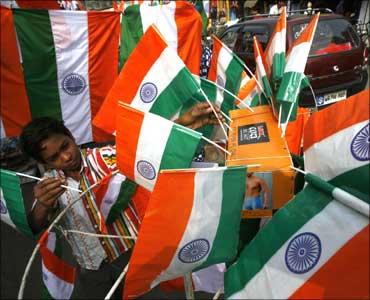
How did the Plan Panel calculate poverty earlier
The Planning Commission had been estimating the incidence of poverty at National and State level (both in rural and urban areas) since the Sixth Five Year Plan on the basis of the recommendations of the Task Force (1979) on projections of minimum needs and effective consumption demand.
These estimates have been revised as per the methodology recommended by the Expert Group on Estimation of Proportion and Number of Poor chaired by Prof. DT Lakdawala.
The expert group, while accepting the definition of poverty line used by the Task Force, set out an alternative methodology for estimation of poverty ratios using quinquennial consumer expenditure survey data of the NSSO and Statespecific poverty lines.
As a departure from the methodology followed by the Task Force, the expert group estimated poverty on the basis of consumer expenditure surveys and did not make any adjustments on the basis of National Accounts.
The government finally approved the methodology for estimating poverty with a slight modification of the Expert Group Methodology for updating the urban poverty line on the basis of Consumer Price Index for Industrial Workers alone instead of average of Consumer Price Index of Industrial Workers and Consumer Price Index of Urban Non-manual Employees.
. . .
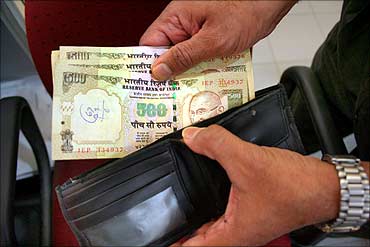
Poverty rate has risen to 37.2%
With the poverty rate rising, the Congress-ruled government will now need to spend more money on the poor.
The Indian government spends only 1 per cent of its gross domestic product on healthcare facilities, forcing millions to struggle to get medicines, Oxfam and 62 other agencies said in a report called: Your Money or Your Life last year.
The government has found that 100 million more Indians are actually living below the poverty line than previously thought. Over 370 million Indians -- 40 per cent of the population -- are now eligible for subsidised food supplies.
The re-calculation is based on earnings and the ability of a family to afford one meal a day meeting minimum nutritional needs. India's poor has been hit by the sharp rise in food prices -- the official index indicates that food price inflation has varied between 18 per cent and 20 per cent in recent months.
. . .
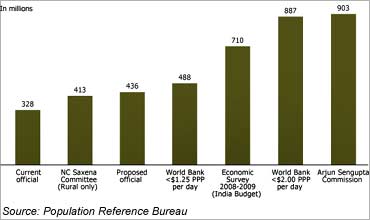
What does the World Bank have to say?
According to the World Bank, more people are living in extreme poverty in developing countries than previously thought as it adjusted the recognised yardstick for measuring global poverty to $1.25 a day from $1.
The poverty-fighting institution said there were 1.4 billion people -- a quarter of the developing world -- living in extreme poverty on less than $1.25 a day in 2005.
Last year, the World Bank said there were 1 billion people living under the previous $1 a day poverty mark.
The new figures are likely to put fresh pressure on big donor countries to move more aggressively to combat global poverty, and on countries to introduce more-effective policies to help lift the poorest.
The Bank has estimated that 100 million people could fall into extreme poverty because of soaring food and energy prices.
. . .
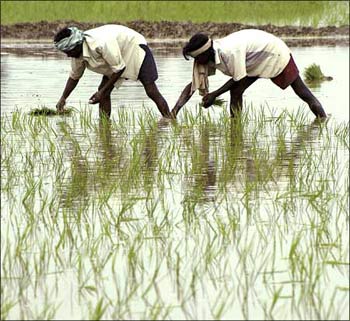
Is India's poverty measuring method controversial?
Countries struggle with measuring their poverty populations, a figure that often determines the distribution of public assistance funds to those in need.
The World Bank estimates that 1.4 billion people live below an income of $1.25 per day and that 2.6 billion live below the $2 level worldwide.
Deciding which of these figures represents 'poverty' is up to the individual.
India is an example of the controversial nature of statistical estimates, although it is far from the only example in this controversy.
Poverty measures in the United States are frequently criticised.
India also serves as a good example since changes in the country's poverty definition can add hundreds of millions to the global poverty population.
India's official poverty measure has long been based solely upon the ability to purchase a minimum recommended daily diet of 2,400 kilocalories (kcal) in rural areas where about 70 percent of people live, and 2,100 kcal in urban areas.
Rural areas usually have higher kcal requirements because of greater physical activity among rural residents.
The estimate is derived from the National Sample Survey, which measures monthly per capita consumer expense every five years.
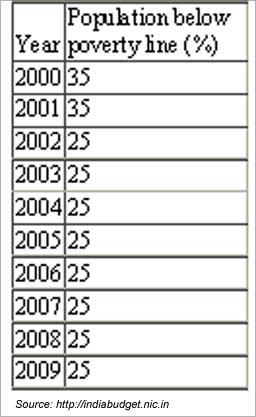
India's BPL population: Measures adopted
The below poverty line population is currently estimated at 29 per cent in rural areas and 26 per cent in urban areas.
The BPL estimates set a rough ceiling on how many people are eligible for BPL identity cards, which provide some commodities at greatly reduced prices.
The income amounts given above to estimate the BPL population have often been laughed at by the Indian press as 'ridiculously low' and 'astounding.'
To address the issue, the Tendulkar Committee was set up in 2008 and reported its recommendations in November 2009.
In 2008, the Union (national) rural development ministry set up a commission to examine alternative methods of estimating poverty.
The commission reported its findings in late 2009.
At the outset, the commission felt that monetary amounts specified by the Planning Commission for a minimal diet were too low. Instead of Rs 356 a month per person in rural areas, Rs 700 was considered necessary (Rs. 1,000 in urban areas).
The commission recommended that the proportion of the rural population living below poverty be raised to at least 50 per cent.
But even that figure was achieved by lowering the rural kcal requirement to 2,100, the same as in urban areas, and adding a minimum monthly cereal consumption of 12.25 kilograms.
If the 2,400 kcal criterion had been kept, the percentage of India's rural population living in poverty would have risen to about 80 per cent.

India's poverty portrays a grim picture
Economic reposrts noted that India's recent economic growth had simply bypassed the vast majority of the population, benefiting a relative few.
To the credit of the current national government, serious steps are being taken to reach the poor providing social security programs, increased education facilities, and local-level technical training.
According to oneworld.net, despite sustained high gross domestic product growth in India, latest estimates of global poverty by World Bank suggest that India has more people living below $2 than even sub-Saharan Africa.
These new figures should compel political leaders and policymakers to devise fresh strategies to reduce poverty.
None other than the World Bank has busted the hype about India's post-liberalisation success.
According to the Bank's new estimates, India is home to roughly one-third of all the poor in the world.
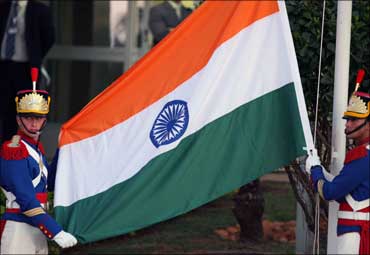
Why these new estimates are significant
The new estimates are based on recently re-calculated purchasing power parity exchange rates that make comparisons across countries possible.
The new PPP has been arrived at as 'the average poverty line found in the poorest 10-20 countries,' according to the Bank's briefing note.
In other words, nearly five out of 10 Indians live below what the world's poorest countries consider the poverty line.
These sobering figures have emerged from the World Bank's latest estimates on global poverty, and clearly hint at the fruits of economic benefits having failed to trickle down to India's poor.
The data available shows that the rate of poverty decline in India was faster between 1981 and 1990 than between 1990 and 2005.
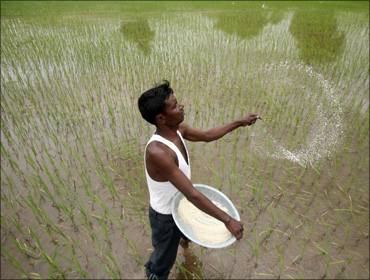
Wherein does the solution lie?
Agriculture holds the key: A report titled Agriculture for Development warned that the international goal of halving extreme poverty and hunger by 2015 would not be reached unless neglect and under investment in the agricultural and rural sectors over the past 20 years was reversed.
It should be noted here that the current World Bank commitments in India's agriculture, irrigation and rural livelihoods amount to $2.6 billion.
Over the years, agriculture in India has seen a steady decline in investment a matter of great concern.
The new estimates show that poverty has been more widespread across the developing world over the past 25 years than previously estimated. But there has also been strong -- if regionally uneven -- progress towards reducing overall poverty.
The World Bank makes the point that while raising people above the poverty line is a relatively achievable task -- it believes poverty levels in 1990 can be halved by 2015 -- it is proving extremely difficult to raise them above the $2 per day mark.
While India's economy is slowly recovering from a global recession with a GDP growth of 7.2 per cent, millions of poor in rural India are finding it difficult to cope with around 17 per cent food price inflation.
It is to be noted that the poverty rate -- those below $1.25 per day -- for India declined from 59.8 per cent in 1981 to 51.3 per cent by 1990, or 8.5 percentage points over nine years.
Between 1990 and 2005 it declined to 41.6 per cent, which is a drop of 9.7 percentage points over 15 years, clearly a much slower rate of decline.
These new figures should give India's leaders, policymakers and economic think-tanks sleepless nights and compel them to take a fresh look at strategies to reduce poverty.